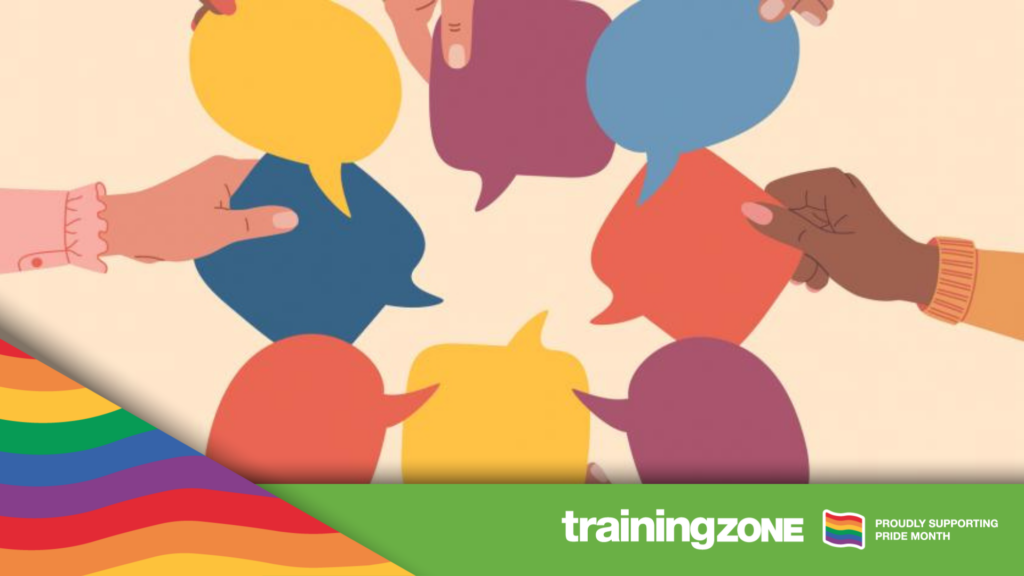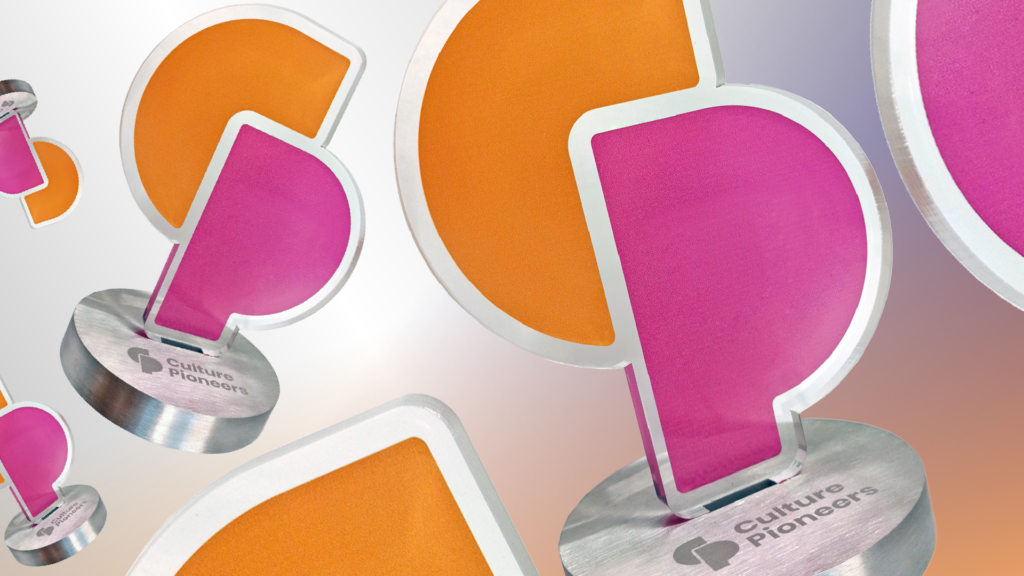If you’ve had any DEI training, it’s likely you’ve come across some common activities like ‘The Privilege Walk’.
Inspired by the essay White Privilege: Unpacking the Invisible Knapsack by Professor Peggy McIntosh, the activity usually starts with participants lined up side by side and given instructions to move across the room based on statements like:
- If you are a white male, take one step forward
Or:
- If you’ve ever been asked to answer for an entire identity group as if you’re ‘the expert’, take one step backward
At the end, you’re asked to look around and assess your privilege in relation to other participants in the room (in virtual renditions, you may see your location on the screen in comparison to others).
In short, it can be a powerful exercise in raising awareness.
One of the most pressing issues in any workplace, and especially in DEI, is the consideration of your learners’ psychological safety – that is, the ability to speak without fear of backlash of any kind
One step forward, two steps back?
The activity has evolved in recent years to encompass privileges related to a variety of identity domains, including questions relevant to the LGBTQ+ community:
- If you can show affection for your romantic partner in public without fear of judgement or ridicule, take one step forward
- If you’ve ever been bullied because of your sexual orientation, take one step backward
- If you’ve ever hidden a part of your identity in order to fit in or protect yourself, take one step backward
On one hand, it’s encouraging that DEI training is acknowledging these questions surrounding gender identity and sexualities.
On the other hand, is this enough to bust ‘DEI fatigue’ that comes from returning again and again to traditional exercises first developed in the 1990s – even those that are well intentioned?
Let’s consider some of the downfalls of simply expanding traditional exercises when it comes to LGBTQ+ issues in particular.
How safe are your participants?
One of the most pressing issues in any workplace, and especially in DEI, is the consideration of your learners’ psychological safety – that is, the ability to speak without fear of backlash of any kind.
One risk associated with asking learners to take part in an exercise of this kind is whether the training is asking people to ‘out’ themselves when responding publicly to the questions.
Are they further marginalised if, at the end of the exercise, the place they are standing reveals more than they want to share with the group in that time and place?
If some participants are viewed as merely an outgroup when they end up in the ‘back of the room,’ we risk overlooking the strengths and insights that diverse backgrounds and experiences bring to the table
Are already marginalised groups being used as ‘story material’?
Ask yourself who this exercise is for, and how you are ‘using’ everyone in the room for that aim.
Most of the utility this kind of exercise offers is in the insights for people who have rarely been confronted with the invisible privileges they carry – usually people identified as white, cisgender, ‘straight’, and male.
This begs the question, what of the participants who end up in the ‘back of the room’?’
What are the effects for people already painfully aware of all the ways they aren’t privileged? What’s in it for them?
Is comparison useful for awareness or does it risk making things worse?
Comparison laid out in the open caddies the risk that people may be made to feel as if they are being viewed as ‘less than’.
This holds up in research that shows those with more privilege tend toward ‘out-group bias’.
That is, an assumption that something is wrong with the out-group (rather than the systemic issues they face.)
If some participants are viewed as merely an outgroup when they end up in the ‘back of the room,’ we risk overlooking the strengths and insights that diverse backgrounds and experiences bring to the table – which fundamentally undermines the goals of DEI training.
What would it look like to flip the script and create a training exercise that illuminated different perspectives as strengths, and focused on the seeds for solutions?
So, what’s a well-intentioned DEI practitioner to do? Flip the script!
Facilitators create trusted group environments, and, as the saying goes, with great power comes great responsibility.
What would it look like to flip the script and create a training exercise that illuminated different perspectives as strengths, and focused on the seeds for solutions?
Here we take inspiration from educator Christina Torres who first posited re-imagining the exercise using questions that centre alternate forms of power, like:
- Step forward if you have a specific community of people who share familiar and cultural contexts with you
Torres’ reframing of the exercise offers an innovative way to extend awareness exercises to be safe and inclusive for all participants.
Starting from this vantage point also offers a more effective way to extend the exercise to action and accountability around effective inclusive behaviours.
Connecting questions to solutions and an action plan
Framing the exercise as Torres suggested above will give you and your participants a list of strengths and resources they can draw upon.
These solution seeds let you get creative, expanding these into practical action steps by examining:
- What can we learn from how a specific community supports its members? For a lot of people, these can take the role of ‘elders’ to offer mentorship, and people to share your own experiences with. For your organisation, an ERG might be a good place to start if you don’t have one yet
- Who can you partner with across differences in the room? Intersectionality matters, and we likely belong to more than one group (eg. one can be LGBTQ+ , a person of faith and disabled). Who is already working in spaces you are looking to support?
- What are elements of a specific cultural context that help foster change? For example, the successful campaign for marriage equality in Ireland centred family and family values in an effective, culturally resonant way to bridge differences. What shared values could drive more inclusion in your workplace?
The seeds are already in the room. Working in a solution-focused way puts your participants back into an active role where their experiences and expertise are centred as the valuable resources they are (over possible victimisation).
Working in a solution-focused way puts your participants back into an active role where their experiences and expertise are centred as the valuable resources they are
Reflection and accountability
Build time in to do this properly, with critical reflection to support ongoing accountability. One way to reflect on this, for instance, is using the OSKAR model:
- Outcome: What is wanted, for the organisation, the topic, and the session?
- Scale: On a scale from 1 to 10 where 10 is the outcome, where are you now?
- Knowhow: What is getting you to that score already? What other relevant know-how can you find elsewhere in the organisation?
- Affirm and action: What do you already see as a facilitator that impresses you? What are some small next steps that could be taken?
- Review: What’s better since last time (or what has already improved)? How did that group do that? Keep it with aspects the group can influence in practice, so not something big amorphous like ‘societal changes’)
If this looks iterative to you, you’re right. Moving from awareness of privilege, difference, and intersectionality to behaviour change will come in steps.
In our next piece, we’ll drill down on action and immersive learning to bust DEI fatigue and refuel your programme.
If you enjoyed this, read: True investment in diversity, equity and inclusion needs more than just awareness
If you’ve had any DEI training, it’s likely you’ve come across some common activities like ‘The Privilege Walk’.
Inspired by the essay White Privilege: Unpacking the Invisible Knapsack by Professor Peggy McIntosh, the activity usually starts with participants lined up side by side and given instructions to move across the room based on statements like:
- If you are a white male, take one step forward
Or:
- If you’ve ever been asked to answer for an entire identity group as if you’re ‘the expert’, take one step backward
At the end, you’re asked to look around and assess your privilege in relation to other participants in the room (in virtual renditions, you may see your location on the screen in comparison to others).
In short, it can be a powerful exercise in raising awareness.
One of the most pressing issues in any workplace, and especially in DEI, is the consideration of your learners’ psychological safety – that is, the ability to speak without fear of backlash of any kind
One step forward, two steps back?
The activity has evolved in recent years to encompass privileges related to a variety of identity domains, including questions relevant to the LGBTQ+ community:
- If you can show affection for your romantic partner in public without fear of judgement or ridicule, take one step forward
- If you’ve ever been bullied because of your sexual orientation, take one step backward
- If you’ve ever hidden a part of your identity in order to fit in or protect yourself, take one step backward
On one hand, it’s encouraging that DEI training is acknowledging these questions surrounding gender identity and sexualities.
On the other hand, is this enough to bust ‘DEI fatigue’ that comes from returning again and again to traditional exercises first developed in the 1990s – even those that are well intentioned?
Let’s consider some of the downfalls of simply expanding traditional exercises when it comes to LGBTQ+ issues in particular.
How safe are your participants?
One of the most pressing issues in any workplace, and especially in DEI, is the consideration of your learners’ psychological safety – that is, the ability to speak without fear of backlash of any kind.
One risk associated with asking learners to take part in an exercise of this kind is whether the training is asking people to ‘out’ themselves when responding publicly to the questions.
Are they further marginalised if, at the end of the exercise, the place they are standing reveals more than they want to share with the group in that time and place?
If some participants are viewed as merely an outgroup when they end up in the ‘back of the room,’ we risk overlooking the strengths and insights that diverse backgrounds and experiences bring to the table
Are already marginalised groups being used as ‘story material’?
Ask yourself who this exercise is for, and how you are ‘using’ everyone in the room for that aim.
Most of the utility this kind of exercise offers is in the insights for people who have rarely been confronted with the invisible privileges they carry – usually people identified as white, cisgender, ‘straight’, and male.
This begs the question, what of the participants who end up in the ‘back of the room’?’
What are the effects for people already painfully aware of all the ways they aren’t privileged? What’s in it for them?
Is comparison useful for awareness or does it risk making things worse?
Comparison laid out in the open caddies the risk that people may be made to feel as if they are being viewed as ‘less than’.
This holds up in research that shows those with more privilege tend toward ‘out-group bias’.
That is, an assumption that something is wrong with the out-group (rather than the systemic issues they face.)
If some participants are viewed as merely an outgroup when they end up in the ‘back of the room,’ we risk overlooking the strengths and insights that diverse backgrounds and experiences bring to the table – which fundamentally undermines the goals of DEI training.
What would it look like to flip the script and create a training exercise that illuminated different perspectives as strengths, and focused on the seeds for solutions?
So, what’s a well-intentioned DEI practitioner to do? Flip the script!
Facilitators create trusted group environments, and, as the saying goes, with great power comes great responsibility.
What would it look like to flip the script and create a training exercise that illuminated different perspectives as strengths, and focused on the seeds for solutions?
Here we take inspiration from educator Christina Torres who first posited re-imagining the exercise using questions that centre alternate forms of power, like:
- Step forward if you have a specific community of people who share familiar and cultural contexts with you
Torres’ reframing of the exercise offers an innovative way to extend awareness exercises to be safe and inclusive for all participants.
Starting from this vantage point also offers a more effective way to extend the exercise to action and accountability around effective inclusive behaviours.
Connecting questions to solutions and an action plan
Framing the exercise as Torres suggested above will give you and your participants a list of strengths and resources they can draw upon.
These solution seeds let you get creative, expanding these into practical action steps by examining:
- What can we learn from how a specific community supports its members? For a lot of people, these can take the role of ‘elders’ to offer mentorship, and people to share your own experiences with. For your organisation, an ERG might be a good place to start if you don’t have one yet
- Who can you partner with across differences in the room? Intersectionality matters, and we likely belong to more than one group (eg. one can be LGBTQ+ , a person of faith and disabled). Who is already working in spaces you are looking to support?
- What are elements of a specific cultural context that help foster change? For example, the successful campaign for marriage equality in Ireland centred family and family values in an effective, culturally resonant way to bridge differences. What shared values could drive more inclusion in your workplace?
The seeds are already in the room. Working in a solution-focused way puts your participants back into an active role where their experiences and expertise are centred as the valuable resources they are (over possible victimisation).
Working in a solution-focused way puts your participants back into an active role where their experiences and expertise are centred as the valuable resources they are
Reflection and accountability
Build time in to do this properly, with critical reflection to support ongoing accountability. One way to reflect on this, for instance, is using the OSKAR model:
- Outcome: What is wanted, for the organisation, the topic, and the session?
- Scale: On a scale from 1 to 10 where 10 is the outcome, where are you now?
- Knowhow: What is getting you to that score already? What other relevant know-how can you find elsewhere in the organisation?
- Affirm and action: What do you already see as a facilitator that impresses you? What are some small next steps that could be taken?
- Review: What's better since last time (or what has already improved)? How did that group do that? Keep it with aspects the group can influence in practice, so not something big amorphous like ‘societal changes’)
If this looks iterative to you, you’re right. Moving from awareness of privilege, difference, and intersectionality to behaviour change will come in steps.
In our next piece, we’ll drill down on action and immersive learning to bust DEI fatigue and refuel your programme.
If you enjoyed this, read: True investment in diversity, equity and inclusion needs more than just awareness







